Putin flexes muscle in big test of Russia's nuclear arsenal
By Steve Gutterman | Reuters – 4 hrs ago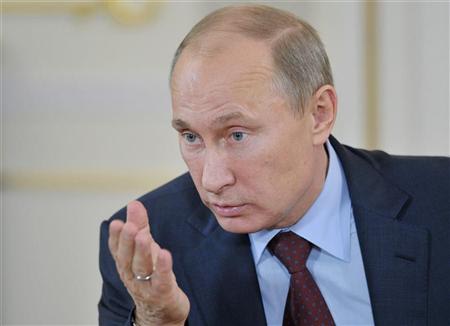 Reuters/Reuters - Russia's President Vladimir Putin speaks during a meeting with members of All Russia People's Front at the Novo-Ogaryovo residence outside Moscow, October 18, 2012. REUTERS/Aleksey Nikolskyi/RIAMOSCOW (Reuters) -
Reuters/Reuters - Russia's President Vladimir Putin speaks during a meeting with members of All Russia People's Front at the Novo-Ogaryovo residence outside Moscow, October 18, 2012. REUTERS/Aleksey Nikolskyi/RIAMOSCOW (Reuters) -President Vladimir Putin took a leading role in the latest tests of Russia'sstrategic nuclear arsenal, the most comprehensive since the 1991 Soviet collapse, the Kremlin said on Saturday.
The exercises, held mostly on Friday, featured prominently in news reports on state television which seemed aimed to show Russians and the world that Putin is the hands-on chief of a resurgent power.
Tests involving command systems and all three components of the nuclear "triad" - land and sea-launched long-range nuclear missiles and strategic bombers - were conducted "under the personal leadership of Vladimir Putin", the Kremlin said.
An RS-12M Topol Intercontinental Ballistic Missile was launched from the Plesetsk site in northern Russia, and a submarine test-launched another ICBM from the Sea of Okhotsk, the Defence Ministry said.
Long-range Tu-95 and Tu-160 bombers fired four guided missiles that hit their targets on a testing range in the northwestern Komi region, it said.
"Exercises of the strategic nuclear forces were conducted on such a scale for the first time in the modern history of Russia," the Kremlin statement said.
"Vladimir Putin gave a high evaluation to the combat units and crews and the work of the Armed Forces General Staff, which fulfilled the tasks before them and affirmed the reliability and effectiveness of Russia's nuclear forces."
The exercises included tests of communications systems and "new algorithms" for command and control, it said.
Russia says it is modernizing a nuclear arsenal that was largely created during the Cold War and will continue to use nuclear weapons as a key deterrent.
In the 2010 New START treaty, Russia and the United States set lower numerical ceilings on the weapons tested in the exercise.
But Putin has made clear further cuts depend, among other things, on Washington assuaging his concerns about anti-missile defenses it is deploying, including a European shield Russia says will make it more vulnerable.
Russian and American leaders say nuclear war between the Cold War rivals is now unthink-able.
But critics say Putin - in power since 2000 and back as military commander-in-chief since his return to the Kremlin in May after four years as prime minister - is exaggerating potential threats from the West to bolster support at home.
(Editing by Andrew Roche)
Iran Is Ready to Talk About Nuclear Program
By Connor Simpson | The Atlantic Wire – 1 hr 59 mins ago
This is convenient timing. The New York Times' Helene Cooper and Michael Landry report Iran has finally agreed to sit down for the first time for one-on-one negotiations with the U.S. over their controversial nuclear program.
The catch: they won't sit down until after the election is over. They don't want to start negotiating with a President who may or may not be there in two weeks.
But the agreement is a big get for Obama, the culmination of four years of "secret, intense" negotiations between the two sides.
There are a bunch of other logistics to work out, including getting final, official say from Iran's supreme leader Ayatollah Ali Khamenei. Top officials have agreed to the talks but Ali Khamenei hasn't signed off.
Israel was pretty skeptical Iran would be productive when they spoke to the Times.
Israel's spent much of the last year drawing red lines for Iran's controversial nuclear program. They don't want Iran to go over a certain enrichment level without incurring the wrath of an attack.
Skeptics are already saying the agreement is an effort from Iran to ease international tension on them. Others are saying they're bending to the sanctions that are tanking their economy.
EXPLORE RELATED CONTENT
1 - 4 of 20
-
-
-
-
This is convenient timing. The New York Times' Helene Cooper and Michael Landry report Iran has finally agreed to sit down for the first time for one-on-one negotiations with the U.S. over their controversial nuclear program.
The catch: they won't sit down until after the election is over. They don't want to start negotiating with a President who may or may not be there in two weeks.
But the agreement is a big get for Obama, the culmination of four years of "secret, intense" negotiations between the two sides.
There are a bunch of other logistics to work out, including getting final, official say from Iran's supreme leader Ayatollah Ali Khamenei. Top officials have agreed to the talks but Ali Khamenei hasn't signed off.
Israel was pretty skeptical Iran would be productive when they spoke to the Times.
Israel's spent much of the last year drawing red lines for Iran's controversial nuclear program. They don't want Iran to go over a certain enrichment level without incurring the wrath of an attack.
Skeptics are already saying the agreement is an effort from Iran to ease international tension on them. Others are saying they're bending to the sanctions that are tanking their economy.
EXPLORE RELATED CONTENT
1 - 4 of 20
Satellite Sees Hurricane Merge With Cold Front
By OurAmazingPlanet Staff | LiveScience.com – Fri, Oct 19, 2012
Hurricane Rafael ended its run as a tropical cyclone yester-day (Oct. 18), when it merged with a cold front off the coa-st of Nova Scotia-, an event caught by NASA's Terra satell-ite.
Rafael became an extra-tropical cyclone the previous day as it moved northward in the Atlantic Ocean.
Tropical cyclones (the generic term for hurricanes, tropical storms and typhoons) are fuel-ed by warm tropical ocean waters and moisture-filled warm air that drives the overturning in the atmosphere that create thunderstorms; extra-tropical storms have shifted to become cold systems that are just like the low pressure system that sweep across the mid-latitudes and bring storms with them, a NASA release stated.
At the time it made that shift, Rafael still had hurricane-force winds that had a maximum speed of 75 mph (120 kph) (the threshold forhurricane strength is 74 mph).
The following day, Rafael merged with the cold front; the fringes of the former hurricane were barely brushing the coast of Nova Scotia, as can be seen in the Terra satellite image.
Rafael was the ninth hurricane of the 2012 Atlantic hurricane season and the 17th named storm (storms are named once they reach tropical storm status). The storm spun up during the "second peak" of hurricane season, which historically comes in the middle of October. The main peak of storm season is during August and September.
This hurricane season has been an above-average one; an average season sees 11 named storms, six hurricanes and two major hurricanes.
Boy Ordered to Transfer Schools for Carrying Cystic Fibrosis Gene Mutation
By Lara Salahi | ABC News Blogs – Fri, Oct 19, 2012 7:00 AM EDT

A California middle school has asked that an 11-year-old boy be transferred elsewhere because he carries a mutation of the gene for cystic fibrosis, a life-threatening genetic disease that is not considered contagious. His parents say they will take the issue to court.
School administrators told 11-year-old Colman Chadam he needed to transfer from Jordan Middle School in Palo Alto, Calif., because he was considered a risk to another student at the school who has the disease, the San Francisco Chronicle reported.
"Based on the advice of medical experts, this is the zero risk option, and most certainly helps our District deliver on its commitment to provide safe learning environments," Charles Young, associate superintendent of education service at the Palo Alto Unified School District, said in a written statement to ABC News.
Colman's parents are going to court to dispute the transfer, claiming their sixth grade son poses no threat to the school or other students.
Cystic fibrosis is a genetic lung disease characterized by uncontrollable buildup of mucus in the airways, digestive tract and pancreas.
An estimated 30,000 children and adults have cystic fibrosis, and 10 million more are carriers of the cystic fibrosis genetic mutation but do not have the disease, according to the Cystic Fibrosis Foundation.
While Colman, who has the mutation, may be at higher risk for lung infections, he poses no risk to children without cystic fibrosis or those who do not have the gene for the disease. However, researchers say it may be risky for him to encounter someone who does have the disease.
Exposure can cause bacterial cross- contamination and a higher risk for infections among people who are carriers of the gene or who have the disease, according to a paper published in 2003 by Dr. Lisa Saiman, a professor of clinical pediatrics at Columbia University Medical Center in New York.
School administrators said the school already had a student with cystic fibrosis before Colman arrived.
Colman's mother, Jennifer Chadam, told the San Francisco Chronicle she listed Colman's genetic condition on his school health form.
She said he has previously attended two other schools with children who have cystic fibrosis.
"They made this decision without seeing one medical record on my son," Jennifer Chadam told the Chronicle.
According to Dr. John LiPuma, director of the Cystic Fibrosis Foundation Burkholderia cepaciaResearch Laboratory and Repository at the University of Michigan, there are many children who carry genes for a disease they will never go on to develop.
"Given this school's strategy, they would need to reassign about 5 percent of their student body to another school," he said.
But Young said the administration said they are not willing to take chances.
"The harsh reality of a busy middle school campus, where students ranging in ages from 12 to 15 share a cafeteria, restrooms, the gym and locker room, a library and other settings, is that it might be virtually impossible to maintain a specified separation and sanitation protocols at all times," Young wrote.
Carriers and children with cystic fibrosis can attend the same school as long as they are not placed in the same classroom or stay at least three feet away from each other, according to infection control guidelines from the Cystic Fibrosis Foundation.
However, LiPuma said, with proper hygiene, it's highly unlikely that any infection will occur, even if students come in close conta-ct.
"These people do not have CF and should not be treated differently based on having a single gene," said LiPuma. "To do otherwise is simply acting contrary to facts, borne out of ignorance or malice."
School administrators requested that Colman be transferred to Terman Middle School, which is located in the same school district.
The court case to determine whether the transfer is justified is scheduled for Oct. 25.
Also ReadReuters Videos
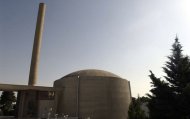


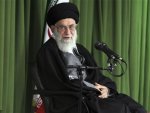
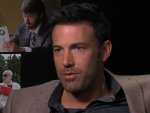

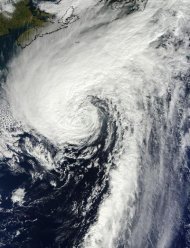
No comments:
Post a Comment
Note: Only a member of this blog may post a comment.